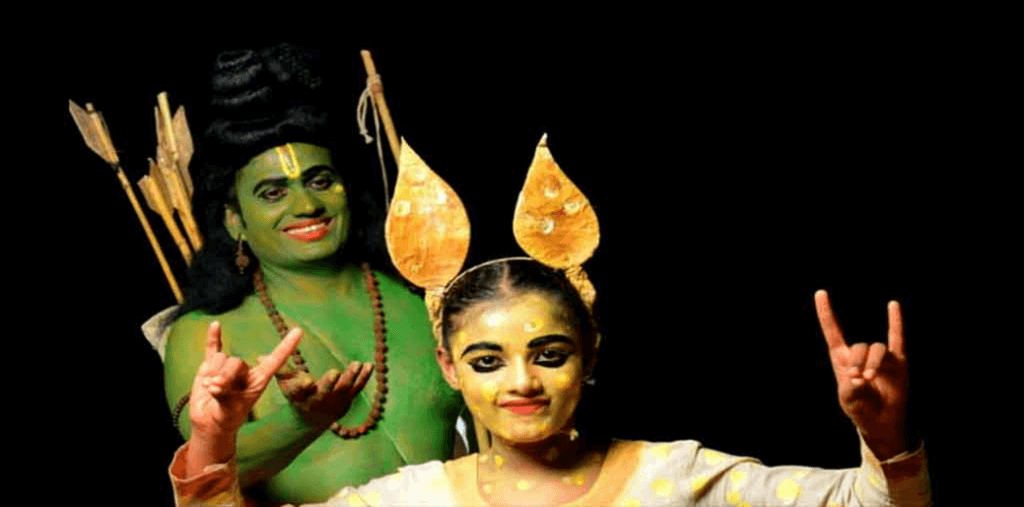Daily Current Affairs : 28-August-2023
Seethakali, a captivating centuries-old folk art form, has been experiencing a revival in the vibrant state of Kerala. Rooted in tradition and culture, this art form, which originated in the Perinad region of Kollam district, Kerala, is a testament to the rich cultural tapestry of the state. We will explore the fascinating world of Seethakali, its historical significance, cultural relevance, and the efforts being made to keep this art form alive.

A Glimpse into Seethakali
- Origin and History
- Seethakali traces its roots back to 150 years ago when it was first performed by the Vedar and Pulayar communities.
- This unique art form is inspired by episodes from the Indian epic Ramayana, particularly focusing on the journey of Seetha, from her time in the woods with Rama to her ascent to the heavens.
- Cultural Significance
- Initially, Seethakali was an integral part of the harvest festival of Onam, celebrated with great zeal in Kerala.
- During the period from Atham star to the 28th day after Onam, performers from subaltern communities would visit houses to showcase their Seethakali skills.
- It provided an opportunity for people from lower sections of society to don vibrant costumes, something they were often restricted from doing in their daily lives.
- Traditional Elements
- Seethakali performances are characterized by the use of natural materials such as bamboo and palm leaves for props and instruments.
- The costumes and makeup worn by performers are striking and attention-grabbing, creating a visual spectacle.
- Notably, characters like Rama and Laxmana are adorned in green attire, a color symbolizing gods and goddesses in Kathakali, adding depth to the portrayal.
- Oral Tradition
- A significant aspect of Seethakali is the accompanying folk songs, which are orally transmitted from one generation to the next.
- These songs serve as a link to the past, preserving the essence of the art form and connecting it to Kerala’s rich cultural heritage.
Revival Efforts
While Seethakali holds immense historical and cultural significance, its existence is under threat due to various challenges. Currently, there is only one registered Seethakali performing group in Kerala, the Perinad Seethakali Sangham. However, concerted efforts are being made to revive and promote this remarkable art form.
- Cultural Awareness
- One of the key steps in reviving Seethakali is creating awareness among the younger generation about its cultural importance and historical roots.
- Schools and cultural organizations are working together to introduce Seethakali as part of the curriculum and encourage students to take an interest in this traditional art form.
- Government Support
- The government of Kerala has recognized the need to preserve and promote Seethakali.
- Financial support, grants, and platforms for performances are being provided to encourage artists and troupes to continue practicing and showcasing Seethakali.
- Cultural Festivals
- Seethakali is now being featured prominently in cultural festivals and events across Kerala.
- This exposure helps in reaching a wider audience and fostering an appreciation for the art form.
Important Points:
- Seethakali is a centuries-old folk art form originating from Perinad, Kollam district, Kerala.
- It depicts episodes from the Indian epic Ramayana, focusing on Seetha’s journey with Rama.
- Originally part of the Onam harvest festival, it allowed lower-caste individuals to wear vibrant costumes.
- Seethakali utilizes natural materials like bamboo and palm leaves for props and instruments.
- Performers wear eye-catching costumes and makeup, with characters like Rama and Laxmana in green attire.
- Folk songs, passed down orally, accompany Seethakali performances.
- Currently, only one registered Seethakali performing group exists, the Perinad Seethakali Sangham.
Revival Efforts:
- Efforts are underway to raise cultural awareness about Seethakali among the younger generation.
- Government support includes financial aid and grants to promote Seethakali.
- Seethakali is being featured prominently in cultural festivals and events across Kerala.
Why In News
Seethakali, a mesmerizing folk art form, is experiencing a vibrant resurgence in the cultural landscape of Kerala. Enthusiastic artists and dedicated practitioners are coming together to breathe new life into this ancient tradition, igniting a cultural renaissance that is captivating audiences across the region.
MCQs about Seethakali: Kerala’s Folk Art
-
What significance does the color green hold in Seethakali performances?
A. It represents nature and the environment.
B. It symbolizes lower-caste individuals.
C. It is used to depict gods and goddesses.
D. It signifies sorrow and melancholy.
-
How is Seethakali being reintroduced to younger generations in Kerala?
A. Through online video tutorials.
B. As part of the school curriculum.
C. Through exclusive private performances.
D. By publishing books about its history.
-
What is the current status of Seethakali performing groups in Kerala?
A. Over a dozen registered performing groups.
B. None exist in Kerala.
C. Only one registered group, the Perinad Seethakali Sangham.
D. Seethakali groups are primarily found in northern Kerala.
Boost up your confidence by appearing our Weekly Current Affairs Multiple Choice Questions
![]()


